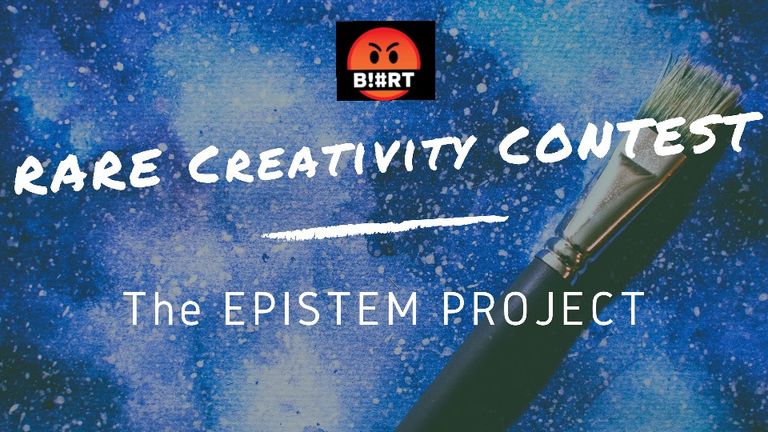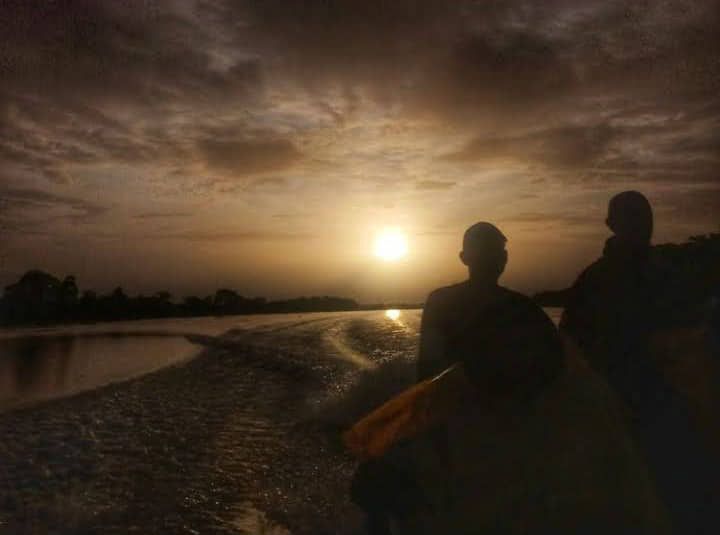
El Delta del Orinoco es un complejo y amplio laberinto de ríos que corren las aguas del río Orinoco a través del Océano Atlántico y lo conectan en una selva tropical. El Delta del Orinoco, un país transformado en un gran río, ha acumulado millones de toneladas de sedimentos oceánicos a lo largo de los años, lo que lo convierte en una parte importante del ecosistema marino frente a la costa norte de América del Sur y el Caribe. .
El delta continúa expandiéndose hacia el Océano Atlántico a una velocidad de 40 metros por año a lo largo de 360 kilómetros de costa. Solo en el siglo anterior, se agregaron al delta unos 1.000 kilómetros cuadrados. El Orinoco se divide en aproximadamente 60 canales y 40 ríos que atraviesan 41.000 kilómetros cuadrados de islas selváticas, pantanosas y lagunares.
The Orinoco Delta is a complex and extensive labyrinth of rivers that run the waters of the Orinoco River through the Atlantic Ocean and connect it into a tropical rainforest. The Orinoco Delta, a country transformed into a great river, has accumulated millions of tons of ocean sediments over the years, making it an important part of the marine ecosystem off the northern coast of South America and the Caribbean. .The delta continues to expand into the Atlantic Ocean at a rate of 40 meters per year along 360 kilometers of coastline. In the previous century alone, some 1,000 square kilometers were added to the delta. The Orinoco is divided into approximately 60 channels and 40 rivers that cross 41,000 square kilometers of jungle, swamp and lagoon islands.
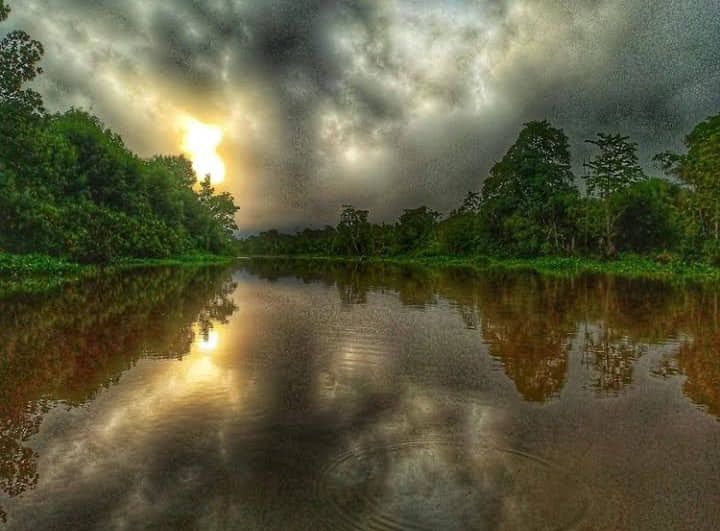
Delta es una de las áreas biológicamente más diversas del mundo. En el delta han aparecido varios hábitats, tanto terrestres como marinos. Un bosque tropical mixto, donde las grandes palmeras dominan gran parte del continente, con muchos cultivos diferentes que incluyen frutas, orquídeas, bromelias y helechos; multiplica el aire húmedo en el túnel formado por hojas gruesas.
Los pantanos y ciénagas están repletos de vegetación acuática y los estuarios hacia el mar están cubiertos por manglares. A lo largo del delta, las tuberías en sí tienen formas completamente diferentes, amplios pasajes que se convierten en pequeños arroyos, lagunas y estanques separados. Unos, base plena, marrones, otros negros por el ácido tánico. Muchos están cubiertos de grandes praderas a la deriva de pino (Leknín) y malas hierbas, que poco a poco se lleva la marea.
Delta is one of the most biologically diverse areas in the world. Various habitats, both terrestrial and marine, have appeared in the delta. A mixed tropical forest, where large palm trees dominate much of the continent, with many different crops including fruits, orchids, bromeliads and ferns; multiply moist air in the tunnel formed by thick leaves.
The swamps and marshes are full of aquatic vegetation and the estuaries towards the sea are covered by mangroves. Along the delta, the pipes themselves have completely different shapes, wide passages that turn into small streams, lagoons and separate ponds. Some, full base, brown, others black from tannic acid. Many are covered with large drifting meadows of pine (Leknin) and weeds, which are gradually carried away by the tide.

Baste decir que la vida silvestre en el delta también es extremadamente diversa y rica. Jaguares, pumas, ocelotes, capuchinos y moretones, capuchinos, agudos, nutrias, manatíes y delfines son solo algunas de las innumerables especies de mamíferos que se encuentran en su hábitat natural. Las grandes poblaciones de aves incluyen periquitos, guacamayos, tucanes, patitos, anguilas, garzas, halcones, águilas y colibríes policromos. También hay muchos anfibios, reptiles y peces, incluyendo anacondas, boas, víboras, fer-de-lance, serpientes de coral, iguanas, caimanes, tortugas, pirañas, mantarrayas y bagres.
Suffice it to say that the wildlife in the delta is also extremely diverse and rich. Jaguars, pumas, ocelots, capuchins and bruins, capuchins, agoutis, otters, manatees and dolphins are just a few of the countless species of mammals found in their natural habitat. Large populations of birds include parakeets, macaws, toucans, ducklings, eels, herons, hawks, eagles and polychrome hummingbirds. There are also many amphibians, reptiles and fish, including anacondas, boas, snakes, fer-de-lance, coral snakes, iguanas, caimans, turtles, piranhas, manta rays and catfish.
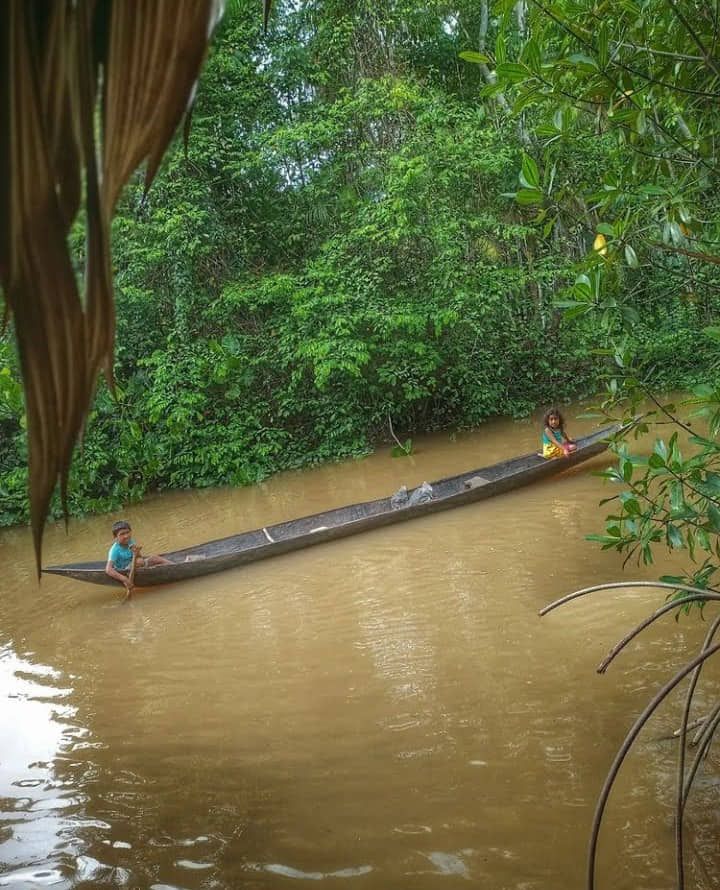
Es muy difícil determinar la fecha en que estas tribus se asentaron por primera vez en el territorio del actual estado Delta Amacuro. Sin embargo, se cree que los antiguos Warao del Delta comenzaron unos 17.000 años antes de Cristo. Fue construido a partir de estudios realizados sobre unas piezas de cerámica encontradas en la casa de La Horqueta, que se cree fueron hechas por los indígenas. Todo esto sugiere que esta raza humana es una de las más antiguas del delta y de Venezuela, desde donde emigró a varias islas del Caribe.
It is very difficult to determine the date when these tribes first settled in the territory of the current state of Delta Amacuro. However, it is believed that the ancient Warao of the Delta began about 17,000 years before Christ. It was built from studies carried out on ceramic pieces found in the house of La Horqueta, which are believed to have been made by the indigenous people. All this suggests that this human race is one of the oldest in the delta and in Venezuela, from where it migrated to several Caribbean islands.
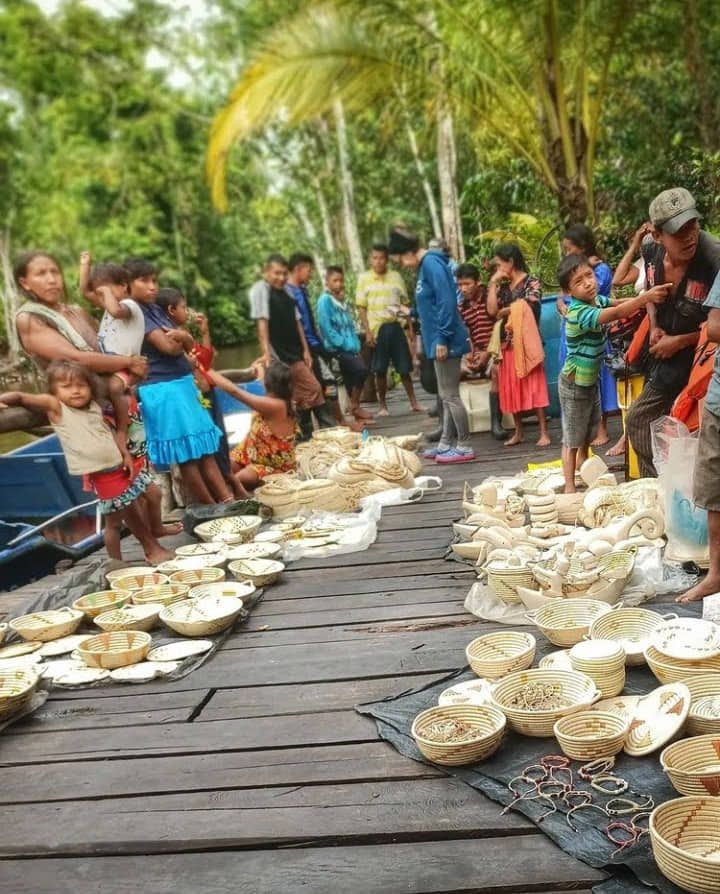
Según trabajos arqueológicos realizados por el estado Delta Amacuro, se han conservado muchas piezas de cerámica, lo que demuestra que los waraos eran artesanos experimentados en esta especialidad, que en ocasiones se remonta a miles de años. . Hoy en día, siguen siendo excelentes artesanos que utilizan materiales vegetales como las plantas de moriche y bora y la madera de sangrito. Elaboran hamacas, canastas, sebucan, manare, guap, cadenas, dibujos de animales y otras tallas en madera, demostrando que Warao tiene capacidad y herencia cultural propia.
According to archaeological work carried out by the state of Delta Amacuro, many pieces of pottery have been preserved, which shows that the Waraos were experienced artisans in this specialty, sometimes dating back thousands of years ... . Today, they continue to be excellent artisans using vegetable materials such as moriche and bora plants and sangrito wood. They make hammocks, baskets, sebucan, manare, guap, chains, animal drawings and other wood carvings, demonstrating that Warao has its own capacity and cultural heritage ... .
